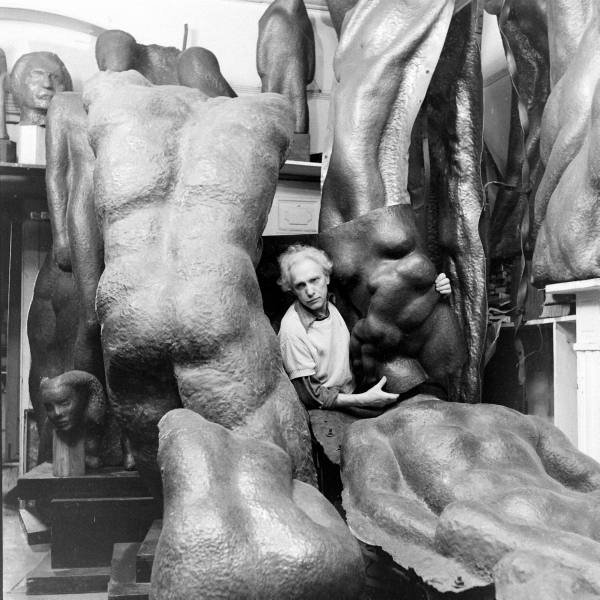Saul Baizerman
American, born Russia, 1889–1957
-
In the 1920s, Baizerman began shaping copper by hand. He would forcefully hammer both sides of a cold copper sheet until a cocoon-like image appeared in relief. This arduous process allowed Baizerman to align his artistic practice with the daily toil of the manual laborer to whom he remained profoundly sympathetic. In addition to producing copper pieces, Baizerman created an ambitious series of small-scale statuettes in bronze and plaster as an homage to the urban worker. He pursued "The City and the People" throughout his life; at his death, the series featured more than fifty pieces--from the "Crippled Sharpener" to the "Drunk Sailor." A second ongoing project, the "Labor" series, equally expressed Baizerman's political commitment and solidarity with the working-class.
As Baizerman gained in prominence, he created larger copper pieces intended for the outdoors. The artist's technique also took its toll. The violent banging reduced Baizerman's motor control of his hands and also damaged his hearing. His exposure to poisonous chemicals from soldering metal led to his death of cancer at age 68.
Courtesy The Getty


